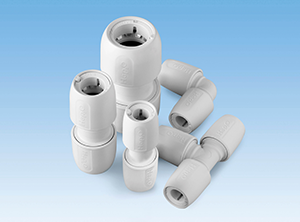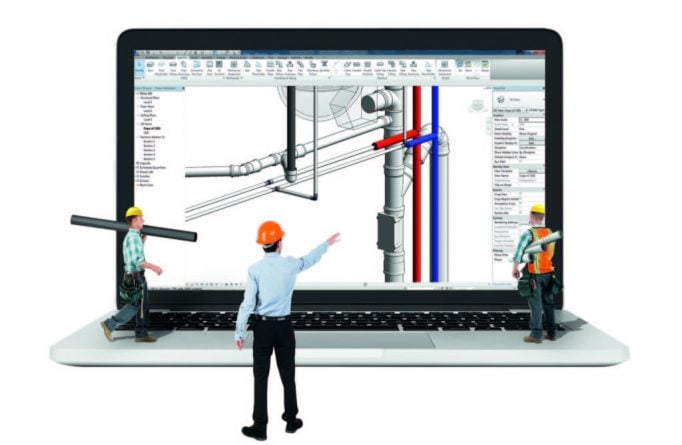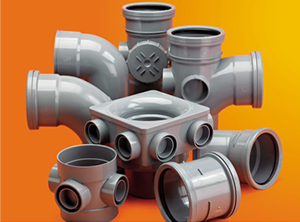Does screed have an effect on Hep2O?
While the pipe won’t suffer from being buried in a screed ,Water and Building Regulations stipulate that either a conduit or appropriate ducting is required for underground hot or cold water supplies.
An important consideration for below ground installations is that the normal depth for Hep2O is a minimum of 600mm underground, so it would not withstand the weight of soil.
However, Hep2O can be buried inside an insulated duct, so long as it is sealed at both ends. In terms of insulating the pipe, it needs to be treated in exactly the same way as copper and lagged to the same thickness.
Is it okay to use Hep2O for a power shower job?
Yes. Any suggestion that only traditional plumbing techniques should be used is a complete myth. Hep2O is equally suitable.

Can I use Hep2O in a continuously operated re-circulating system?
No. Continuously operated re-circulating systems (Secondary Hot Water Circulation/Ring main installations) are very different from conventional hot water supply and central heating systems found in domestic properties, for which Hep2O products have been tested.
What happens if I accidentally kink Hep2O pipe?
Whilst this should be avoided, there is no need to discard the pipe as it may only reduce the pipe strength by approximately 10%. However, if the wall of the pipe is damaged in any way, this should be repaired or replaced.
Can I put Hep2O through a hole in a wall?
Yes, but it should be protected with either a sleeve or temporally taped over to avoid the pipe being scratched, and then the tape must be removed after insertion through the wall.
Can I use Hep2O on a solid fuel boiler?
No, because the maximum water temperature of solid fuel boilers is uncontrolled and can reach excessive temperatures.
What is the general rule of thumb for pressure testing a system?
First carry out a low-pressure water test at 0.5 – 1 bar when the system is just demountable fittings, then a pressure test at 1.5 x the normal working pressure with a recommended minimum of 10 bar for a minimum of 45 minutes. However, if any of our slimline fittings are included with the system, then an 18-bar test for a minimum of 45 minutes should be carried out.
Why does 15mm and 22mm white pipe not have a grey polybutylene inside layer like 10mm?
10mm is made with the grey inner layer to meet the opacity requirement. No light should be allowed to pass through the wall of the pipe and get to the drinking water since any light within the pipe can encourage the growth of algae. 15mm and 22mm wall thickness is adequate for no light permeation.
Do I need to insulate the Hep2O pipe to prevent heat loss?
Yes, in exactly the same way as copper.
Can I use Hep2O in soft water areas?
Yes, unlike copper, no matter how soft (acidic) the water is, it will not corrode Hep2O pipe.
Can a Hep2O Spigot Reducing Elbow be used on a radiator valve, being inserted into the valve and sealed with the nut and ring?
Yes, the spigot can be fitted to a radiator valve.
Will the Hep2O HepTools fit an elbow fitting?
Yes, the HepKeys do fit elbow fittings. You just need to spin the long sections so that they are not hitting the socket below. The demounting tools will fit all Hep2O sockets of the corresponding diameter and are ideal for tight spaces. Watch the video below to see more about jointing and demounting.
Is there a correct flow direction for the 15mm shut-off valve?
There is no wrong direction of flow for this. The shut-off valve can be used in either direction.
Can the Hep2O Push-Fit Spigot Reducer be used on a 15mm olive/compression pipe fitting?
Hep 2O is compatible with compression fittings and there will be no issues making a compression joint providing that a copper olive is used. Page 24 of our Installer Guide has a step-by-step guide to compression joints.
Does Hep2O Barrier pipe need insulation?
Hep2O barrier pipe would require insulation if installed in an area where there is a risk of freezing. The barrier layer in Hep 2 O barrier pipe prevents the ingress of oxygen, it is not an insulation layer.
Does the Hep2O push-fit plumbing range come with a CE Certificate?
No, the range does not come with a CE certificate.
To provide a bit of background information, CEN – the European Committee for standardisation – has not yet published the necessary harmonised European standards that will allow CE marking of plastics pipework systems.
This means that it is not currently possible, nor legal, to apply CE marking to, or issue a Declaration of Performance (DoP) for, plastics pipework systems in any of the following, end-use applications:
• Non-pressure soil and waste discharge
• Underground non-pressure drainage and sewerage
• Buried and above-ground pressure piping
• Hot and cold water piping
Looking to find out more about Hep2O?
Our eLearning course covers:
- How Hep 2O works
- Our unique In4Sure joint recognition
- How Hep 2O compares to copper pipe systems
Is the Push-Fit Spigot Reducer 15 x 10mm suitable for a central heating system? I need to go from 10mm Hep2O to 15mm copper.
Yes this fitting is suitable for central heating and it will connect directly to metric size copper pipe of the same diameter. Read more about connecting Hep2O and copper here.
Are the Hep2O straight connectors suitable for connecting to a hot water copper pipe?
Yes, Hep2O pipes and fittings can be easily connected to existing copper systems. This fitting can go directly onto metric size copper pipe of the same diameter. Watch the video below to find out more about jointing copper pipe using Hep 2O fittings.
Are Hep2O gate valves suitable for central heating systems?
Yes, the gate valves can be used for central heating or hot and cold water supply.
What is the outside diameter of Hep2O HXX03/15WS Barrier Pipe 15mm?
The outside diameter of this pipe is 15mm.
Could I use a 15mm Bent Tap Connector to connect to the male thread of a 15mm compression fitting?
Yes, this fitting is designed to connect to a ½” BSP Male Thread.
In a Hep2O push-fit Spigot Reducer 15 x 10mm, is the bit you push into the fitting 15mm? Do you then push a 10mm pipe into this fitting or the other way around?
The socket is designed for a 10mm pipe and the spigot is 15mm, designed to push into a 15mm socket.
Is the Reducing Tee 22 x 15 x 15mm suitable for use with copper pipe?
Yes, this is suitable for use with copper plumbing pipe. This fitting can go directly onto metric size copper pipe of the same diameter.
I would like to joint my Cold Water Blue MDPE Pipe with a 15mm Hep2O barrier pipe for an outside tap. Is it okay to use?
Hep2O is for internal use, however, if it is used externally it will need to be protected from frost and UV light. Please note we do not have a connection between 15mm Hep 2O and 20mm or 25mm MDPE.
Are Hep2O fittings compatible with the JG Speedfit system pipework?
We cannot guarantee that all push-fit plumbing brands are made to the same standards for the internal diameter, so we cannot say that Hep2O fittings are compatible with JG Speedfit pipework. We always recommend that you to use Hep2O push-fit plumbing pipe with Hep2O fittings.
Are Hep2O demountable stop ends suitable for testing air and what pressure is okay?
We do not recommend that Hep2O is tested with air. Our recommended test is a water test, due to possible health and safety issues when testing with air.

What size radiator valve is to be used with the 10mm Push-Fit Single Socket Elbow (HD4/10WS)?
The spigot on this fitting is 10mm and designed to fit into a 10mm socket/compression fitting.
Do Hep2O pipes need inserts as well?
Yes, all Hep2O pipe needs a Smart Sleeve insert before connecting to a fitting.
Are brass male socket adaptors designed to fit flexible hoses from a tap?
Providing that your flexible tap connector has a ½” Female BSP Thread then there will be no issue connecting this (HX29/15W) to it. This will allow you to continue the system in Hep2O.









